#sunaura taylor
Text
"A telling example of the impulse to project human stereotypes of disability onto other animals can be found in the story of Mozu, a snow monkey (a Japanese macaque) who was born in Japan’s central highlands. Mozu was born with abnormalities of her hands and feet thought to have resulted from pesticide pollution. Snow monkeys spend much of their time moving through trees, which allows them to avoid wading through the thick snow that covers the ground in the winter months. Mozu’s disabilities meant she was mostly unable to move through the branches; instead she traveled the nearly two miles that her troop covered every day in search of food by alternately walking on her abnormal limbs and crawling and sliding on the forest floor. When Mozu was born, researchers who had been watching this troop feared she would not make it past infancy. To their surprise, Mozu lived for nearly three decades, rearing five children of her own and becoming a prominent troop member.
In an episode of the program Nature featuring Mozu’s story, she is again and again referred to as “inspiring,” “suffering,” and a “very special monkey.” The dramatic music and voice-overs that describe Mozu’s struggle in vivid detail make it nearly impossible to watch her move across the snowy forest floor, a baby clinging to her belly and other monkeys flying by above her, without thinking, “Poor Mozu!”
At the same time, I am aware that the piece was edited to elicit this reaction. There are few shots in which Mozu is not struggling, and I question the effect the videographers had on her and the troop. In one scene her desperation seems to stem from being chased by the cameraperson. The music and voice-overs of course also add a sense of struggle to Mozu’s story.
Yet I have no doubt that life was hard for Mozu, and I find myself desperate to know what she thought of her situation. Was her instinct to reach for the trees unquenchable? Was she always in pain, exhausted, or fearful as she moved slowly across the forest floor? Did she wonder why she was different from her companions? I cannot help but wonder, although I realize how similar these thoughts are to the tiresome questions I have been asked again and again about my own life, my own disability. My desire for Mozu’s life not to be seen as one of suffering and struggle is also a projection, one that wishes disability empowerment onto my fellow primate. Our human perspective shapes how we interpret Mozu’s experience.
Many of our ideas about animals are formed by our assumption that only the “fittest” animals survive, which negates the value and even the naturalness of such experiences as vulnerability, weakness, and interdependence. When disabilities occur, we assume that “nature will run her course,” that the natural process for a disabled animal is to die, rendering living disabled animals not only aberrant but unnatural."
-- Sunaura Taylor, "Animal crips" in Disability and Animality: Crip perspectives in Critical Animal Studies.
2K notes
·
View notes
Text
Nevertheless, the fact that some vegans can be annoying, misguided, or worse, is not a reason for people on the left to dismiss the question of animal liberation or to grant some of the world’s largest corporations a free pass. (If being annoying were the litmus test for leftists, we’d have a small cohort indeed.) In addition to relentlessly critiquing and combating objectionable business practices, we believe that feminists and anti-capitalists have a duty to ask an even more profound question: What grounds our species’ right to commodify and dispossess other sentient beings? What gives our species the right to violently exploit another animal’s sexual and reproductive capacities in the service of capital?
[...]
[W]e see veganism as “an act of the imagination,” a beginning and not an end in itself. It is an aspirational category, an acknowledgement of values that cannot be fully manifested in the world as it currently exists. Refusing to consume animal products is not an act of negation, but a proactive commitment to working to usher in a more emancipatory, egalitarian, and ecologically sustainable society. This process of structural transformation can be aided by a shift in self-understanding. Identifying with other creatures — recognizing Gunda and her piglets as fellow creatures not commodities — while still honoring our myriad differences, is one way to challenge capitalism’s perennial politics of divide and conquer.
Astra & Sunaura Taylor, Our Animals, Ourselves: The Socialist Feminist Case for Animal Liberation.
182 notes
·
View notes
Text
I'd not seen this before. Really nice.
15 notes
·
View notes
Text
3.2: Thinking About How We Think About Animals with Dr Chloë Taylor
Today’s episode is all about animal ethics—or do we mean critical animal studies? @arielkroon discusses this linguistic nuance and the differences between them (and much, much more!) with Dr Chloë Taylor, professor of women and gender studies at University of Alberta.
Today’s episode is all about animal ethics—or do we mean critical animal studies? Ariel discusses this linguistic nuance and the difference between them (and much, much more!) with Dr Chloë Taylor, professor of women and gender studies at the University of Alberta. Dr Taylor has been involved in a five-year-long project researching the “Intersections of Animality” and is a trained philosopher who works in gender studies, and sees a lot of intersections between the way that we think about and treat animals and the way that we think about and treat minoritized subjects. Come join us for a thought-provoking and highly educational discussion here!
Links
Dr Chloë Taylor’s profile at University of Alberta
Peter Singer and Tom Regan
North American Association for Critical Animal Studies
Where Disability Rights and Animal Rights Meet: A Conversation with Sunaura Taylor
Making Kin: An Interview with Donna Haraway
Auroch de-extinction and rewilding
Connect with Solarpunk Presents Podcast on Twitter, Mastodon, or at our blog.
Connect with Ariel at her blog, on Twitter at @arielletje, and on Mastodon.
Connect with Christina at her blog, on Twitter, and on Mastodon
Support the show on Patreon or make a one-time donation via PayPal.
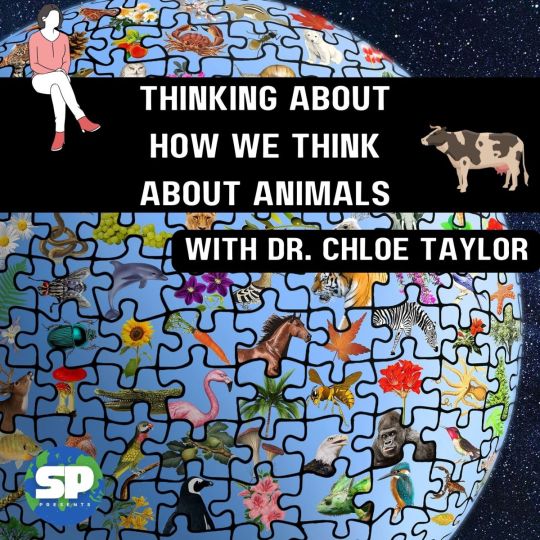
View On WordPress
#animal ethics#animal rights#Chloe Taylor#critical animal studies#definitions of humanity#disability rights#Donna Haraway#hope#Peter Singer#solarpunk#Sunaura Taylor#theory#Tom Regan#University of Alberta#veganism#podcast#episode#podcasting
4 notes
·
View notes
Photo



Art Notes column in Flagpole, 22 June 2005, describing Sunaura Taylor’s exhibition and mentioning Elephant 6 members.
[source]
transcript:
ART NOTES
THREE SHOWS UNDER ONE ROOF
There were days in my childhood when rumors of the circus coming to town offered relief from the heat and stillness of summer. Instead of a circus this week, Athens has AthFest 2005. And in conjunction with AthFest, the Lyndon House Arts Center has art to turn your head. With three shows under one roof, there is something for everyone:
Headspinning: Discover “Headspinning: Inspiration from the Canvas to the Album Cover.” This exhibit offers the chance to see the art that inspired album covers. See the drawing from Randy Bewiey’s sketchbook that became the cover of Pylon’s Gyrate, and the trestles from the cover of R.E.M’s Murmur, and Chris Bilheimer’s many Polaroids that became covers for R.E.M., Green Day, Mendoza Line, Toadies and Ben Mize. There are works in the exhibit that hold much more interest than the familiar album cover, such as two of Terry Rowlett’s paintings. A tiny image on the cover of Five Eight’s The Good Nurse, Rowlett’s painting of a nurse holding flowers, standing in a serene Tuscan landscape, is actually large-scale. The detail of the painting is much more satisfying than the cover suggests. Rowlett’s painting on the cover of Kevin Kinney’s Sun Tangled Angel Revival is divided in half. In the painting, baby Jesus (with a cowboy hat) and Mary float above an old Chevy in a Jerusalem-
meets-Arizona landscape. On the album cover, the virgin and child are on one side while the Chevy is on the other. On Elf Power's Creatures, Laura
Carter's collage appears polished and seamless; but the original is delicate, vulnerable and obviously labored over by hand. A simple pencil
drawing by Stephanie Dotson became the cover of the Phosphorescent album. This cover shows how something raw can be manipulated into a finished product. Other highlights from the exhibit include John Hawkins’ “A Young Professional,” from No Time by The Squalls; the R.A. Miller painting that became part of an Elf Power cover, Andy Cherewick’s painting found on the cover of Dream in Sound, and “Heckatie” by Jeff Owens found on a Drive-By Truckers cover. “Headspinning” will be up through Aug. 6.
Loved Ones and Marshmallows: Sunny Taylor has has developed a skillful approach to classical figure painting. Her paintings stand out as misplaced relics from Madrid's Prado Museum. Only recognizing the subjects of the paintings gives away the third millennium as the date of completion. “Robee and Julian,” is a double portrait which shows the two Athens residents who were Music Tapes wearing marching band jackets. A larger-than-life portrait of Jeff Mangum includes the drawings of little creatures always found on his pants; and, his loud laugh can be heard in the smile Taylor has painted on his face. The love the artist has for her subjects can be seen in these paintings, as well as in the portraits of her sister Astra. Two paintings have a slightly more powerful edge about them. Both “Jolly Jumper” and “Butterfly” are self-portraits painted from childhood photographs. These paintings show a bold melancholy, and an intense attention to detail. The lace on the gown of the baby in “Jolly Jumper” involves an incredible manipulation of paint. “Butterfly” combines the creature of freedom and flight with the look of a frustrated child. Michael Lachowski’s work consists of bold, gestural drawings and fashion photographs. Check out last week's Flagpole on-line at www.flagpole.com for more details on his work. This show runs through Aug. 6.
Golden Threads: The 50th Anniversary of the Chattahoochee Handweavers Guild is marked with the Biennial Southeast Regional Juried Show titled “Golden Threads: Connecting Innovation and Tradition.” The exhibit includes works as diverse as Pat Stettler’s wildly-patterned colorful fabric piece, to Linda Harshbarger’s delicate design and subtle colors. Aaron McIntosh from Smithville, TN, has created a fanciful composition with fiber in which an abstracted road, with dashed yellow lines, leads to a castle with smoke-stacks. Another unique piece is by Jeana Eve Klein from Boone, NC, titled “How to Build a Clique; it uses three dimensions to add interest to the figures and diagrams in the composition. Among the highlights of the exhibit are three large city-scapes by Elizabeth Barton, who is from Athens. The Chattahoochee Handweavers Guild has grown out of a group of five Atlanta women who, in 1955, shared an interest in weaving. The guild has remained flexible and has evolved into a contemporary entity. “Golden Threads” is up until July 15.
Endnotes: Bozeman Pottery has opened at 150 Barrow St. Hours to view the ceramics made from clay dug by Jim Bozeman himself are 1 p.m. to 6
p.m. Contact him at [email protected]. Clayton Street Gallery has re-opened with a fresh Perspective and a new gallery committee.
Beth Sale
Email art news to [email protected].
#Sunaura Taylor#Elephant 6#visual arts#Laura Carter#Julian Koster#Robbie Cucchiaro#Jeff Mangum#articles#2005
5 notes
·
View notes
Text
sometimes searching for books on libby is like. you will find horny books with titles you never could have imagined
#and i’m happy for them it’s just a bit of jump scare when i’m searching for sunaura taylor’s work of disability theory beasts of burden#and am instead confronted with a bunch of shirtless men#jules.txt
7 notes
·
View notes
Text
after the biggest identity crisis, feelings of failure and major breakdowns, i've decided that my next academic year will be... different. i need a break from uni, which still hurts to admit. i intend to make learning enjoyable again, so i will start my year of rest and slow learning. the idea is to go back to learning at my own pace about whatever im curious about and NOT for obligation. so! this is a list of nonfic titles i am considering picking up!
- Ace: What Asexuality Reveals about Desire, Society, and the Meaning of Sex, by Angela Chen
- An Immense World: How Animal Senses Reveal the Hidden Realms Around Us, by Ed Yong
- Beasts of Burden: Animal and Disability Liberation, by Sunaura Taylor
- Black on Both Sides: A Racial History of Trans Identity, by C. Riley Snorton
- Disfigured: On Fairy Tales, Disability, and Making Space, by Amanda Leduc
- Entangled Life: How Fungi Make Our Worlds, Change Our Minds and Shape Our Futures, by Merlin Sheldrake
- Having and Being Had, by Eula Biss
- Medical Bondage: Race, Gender, and the Origins of American Gynecology, by Deirdre Cooper Owens
- Messalina: Empress, Adulteress, Libertine: The Story of the Most Notorious Woman of the Roman World, by Honor Cargill-Martin
- Off with Her Head: Three Thousand Years of Demonizing Women in Power, Eleanor Herman
- Sentient: How Animals Illuminate the Wonder of Our Human Senses, by Jackie Higgins
- The Botany of Desire: A Plant's-Eye View of the World, by Michael Pollan
- The Psychopath Factory: How Capitalism Organizes Empathy, by Tristam Adams
- Unwell Women: Misdiagnosis and Myth in a Man-Made World, by Elinor Cleghorn
- Why Have There Been No Great Women Artists?, by Linda Nochlin
- Witches, Midwives and Nurses: A History of Women Healers, by Barbara Ehrenreich and Deirdre English
- Without Children: The Long History of Not Being a Mother, by Peggy O'Donnell Heffington
9 notes
·
View notes
Photo
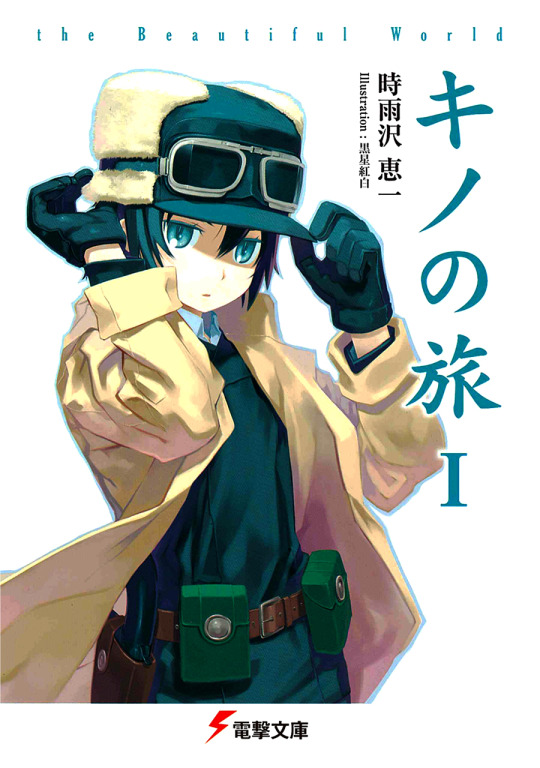
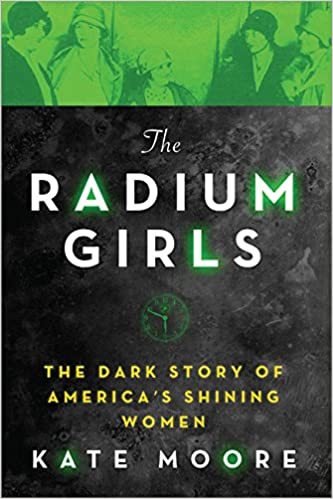
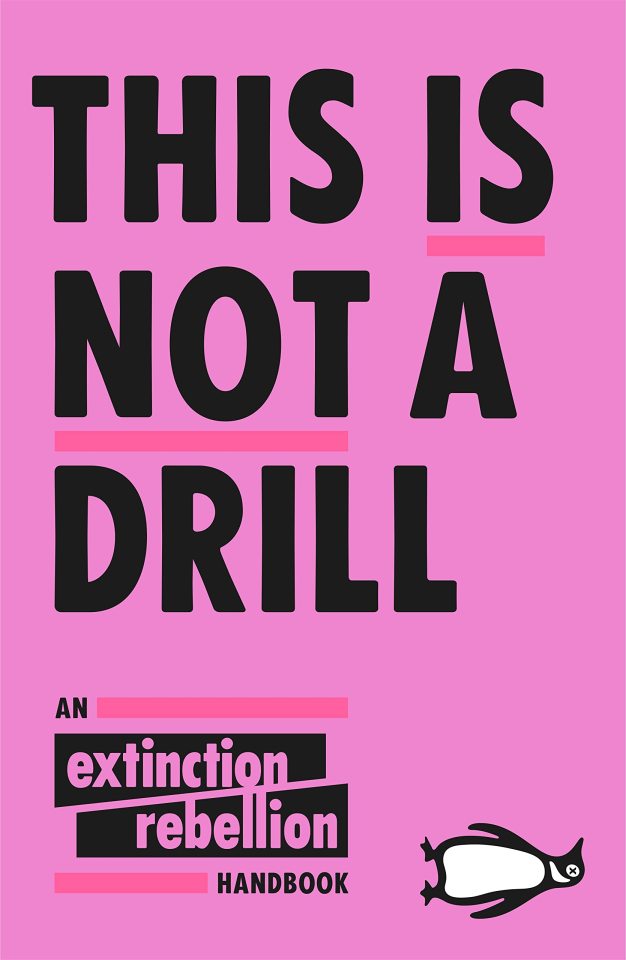
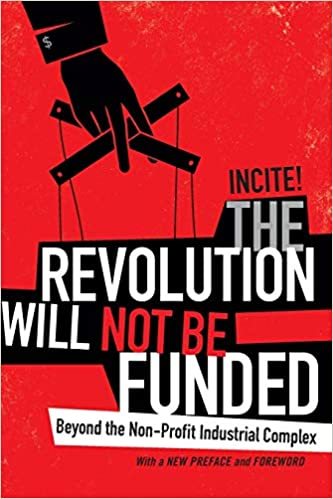





Books Read in 2022:
Kino’s Journey Volume 1 by Keiichi Sigsawa (2000)
The Radium Girls: The Dark Story of America’s Shining Women by Kate Moore (2017)
This is Not a Drill: An Extinction Rebellion Handbook by Extinction Rebellion (2019)
The Revolution Will Not Be Funded: Beyond the Non-Profit Industrial Complex edited by Incite! Women of Color Against Violence (2007)
Eating to Extinction: The World’s Rarest Foods and Why We Need to Save Them by Dan Saladino (2022)
No is Not Enough: Resisting Trump’s Shock Politics and Winning the World We Need by Naomi Klein (2017)
The Remedy: Queer and Trains Voices on Health and Health Care edited by Zena Sharman (2016)
Beasts of Burden: Animal and Disability Liberation by Sunaura Taylor (2015)
A Cruelty Special to Our Specials: Poems by Emily Jungmin Yoon (2018)
[ID: Covers of the aforementioned books. End ID.]
#2022media#gigi.txt#kino's journey is a fantastic light novel series 10/10 rec#radium girls was an easy read that i devoured. i vaguely knew abt this but not details.#really set the groundwork for workers rights and just. god i wish i could personally murder all the higher ups#this is not a drill is insanely liberal#'uwu we're above politics and choose our messaging to not piss off/recruit conservatives but we're anarchists guys!!!'#shut the fuck up shut the fuck up don't bother with that one#rev not funded was a very dense read it took me forever to finish but quite good#even if parts were over my head#no is not enough... existed? i didn't really. come away with anything.#maybe if i had read her other books first and/or read this when it came out it would've meant more#but in 2022 its. shrug.jpg#the remedy was good! lots of different perspectives and things i didn't think about#oh forgot eating to extinction i LOOOOOVED that one and it introduced me to a lot of new books and organizations loved it loved it#beasts of burden was very good and made me think a lot. dont necessarily agree w/ everything#but absolutely worth the read#cruelty special i read in one sitting its dark but so. so so good.
9 notes
·
View notes
Text

Beasts of Burden: Animal and Disability Liberation by Sunaura Taylor
3 notes
·
View notes
Text
The title of this chapter is “Animal Crips.” To call an animal a crip is no doubt a human projection, but it is also a way of identifying non-human animals as subjects who have been oppressed by ableism. Naming animals as crips is a way of challenging us to question our ideas about how bodies move, think, and feel and what makes a body valuable, exploitable, useful, or disposable. It means questioning our assumptions about what a cow or a chicken is capable of experiencing. And it means stopping to consider that the limping fox you see through the barrel of your rifle may actually be enjoying his animal crip life. Animal crips challenge us to consider what is valuable about living and what is valuable about the variety of life.
-- Sunaura Taylor, "Animal crips" in Disability and Animality: Crip Perspectives in Critical Animal Studies.
31 notes
·
View notes
Note
hey!! do you have any recs for books/reading about veganism?
full disclosure, i don't read a bunch on veganism in terms of animal and environmental ethics, because the graphic depictions of abuse/violence/etc. often featured in them i find extremely upsetting. that being said, i do have a few readings - not all books - that i can confidently recommend, as well as a few cookbooks i love!
general theory/etc readings:
Sunaura Taylor, Beasts of Burden: Animal and Disability Liberation
Alexis Pauline Gumbs, Undrowned: Black Feminist Lessons from Marine Mammals
Disability and Animality: Crip Perspectives in Critical Animal Studies (edited collection PDF linked!!)
Ruth Ozeki, My Year of Meats (novel)
Lauren Berlant (z"l), Cruising Veganism (the link is to a pdf on my google drive bc I can't find it atm on google scholar)
Some books on my TBR are:
Julia Feeliz Brueck, Veganism of Color: Decentering Whiteness in Human and Nonhuman Liberation
Han Kang, The Vegetarian (novel)
The Routledge Handbook of Vegan Studies - these handbooks always have both hits and misses, but I think it's worth checking out!
My favorite vegan cookbooks:
Vegan Richa's Indian Kitchen & Vegan Richa's Everyday Kitchen
The Vegan Table (this is tragically out of print now but easy to get used!)
The Vegan Chinese Kitchen
Vegetable Kingdom
Also, The Veginners Cookbook is a great resource for new vegans/people interested in trying veganism, published by a blogger I've liked for a while.
hope this helps!
197 notes
·
View notes
Note
hi! can i ask about the book that you read that is an essay on animal & disabled people's rights? i am interested in learning more about disability rights and it sounds really cool :) xx
sure! it was „beasts of burden” by sunaura taylor, it was very interesting and eye-opening in many ways and certainly changed my way of looking at disability. i recommend it very much, and though i didn’t fully agree with all the statements made by the author, they really broadened my knowledge on the subject.
2 notes
·
View notes
Text
Week 3 :
Examined Life by Judith Butler and Sunaura Taylor, Directed by Sunaura’s older sister, who is a filmmaker
This video has shown us the many topics about society and bodies. What a person can do or cannot do, whether it’s physically, mentally or socially. From what I took notes of, they point out many different aspects of humans in society. Sunaura Taylor is physically disabled. Her role in society gets degraded in a way because she’s always in a wheelchair. She talks about “taking a walk” and it could mean different things. Physical accessibility leads to Social accessibility. She goes on and talks about how on her walks, she would mentally prepare herself to get a coffee. To most of us, it is a normal routine to just walk up to the counter and buy our coffee and take it with us to our table. However, Sunaura buys her coffee then grabs it with her mouth because she couldn’t physically grip it. She talks about how it is an effect of Denormalization. It makes people uncomfortable, even if it is just Sunaura adapting to her surroundings.
They continued talking about what is a body about, what they can do and what a body should look like. Differences and changes can scare people because it can remind them that they won’t fit in and belong in a community if they are like that. People just assume things and demand that they should act a certain way. They talked about a guy who was killed because the way he walked was too feminine. It ties into what society thinks a body should do for different genders and people. It shows our boundaries and where it lies as a human and what lies as non-human. Do we or do we not help each other with basic needs? Would people who usually help will understand because they used to be in that role themselves? But in the end, health is still human. People are allowed to change their body the way they like because it is their body!! Denying this will make you less human in a way.
There are some places I went to that are disabling spaces for people. Disabled, socially, gender, etc.

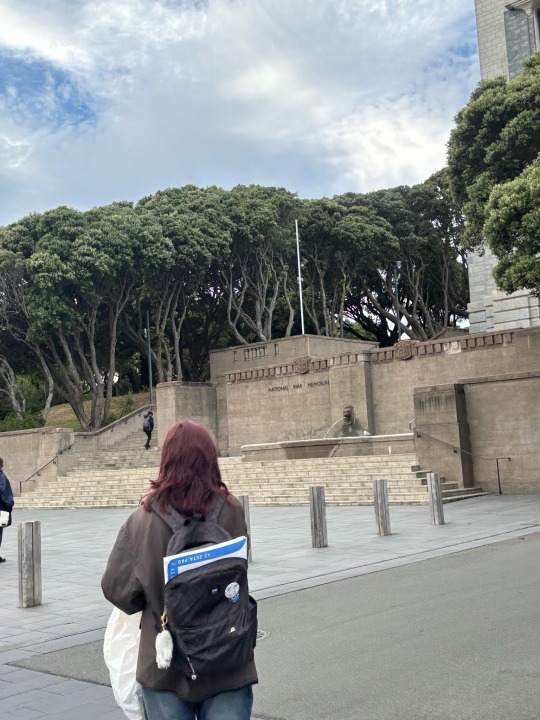
This image shows the stairway to Massey University.
The good thing about these stairs as a student is that there are breaks in between each set of stairs. However, it is disabling towards people who use a wheelchair or aren’t physically fit enough to climb that much stairs.


This image shows the pathway to Massey University
This walkway can be sensory overloading because of how loud your steps can be on the ground (and a bit bumpy). The ground isn’t fully supported for your steps to be more quiet. Also it is quite disabling for people in a wheelchair because of the texture and bumps of the flooring. It makes it hard for them to move through without shaking so much and because of the unnecessary bumps.

This image shows the exterior of a door on my way to the water front.
It is disabling for people who can’t move physically to open it. One way to help is to make the door open automatically.
0 notes
Photo
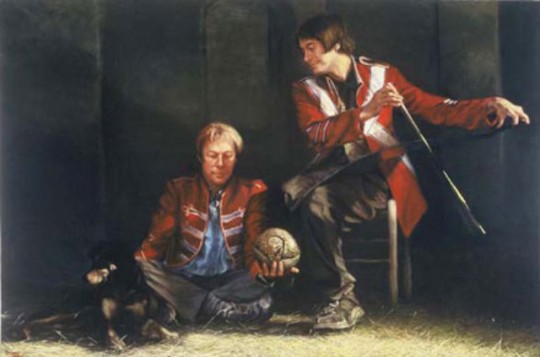
Sunaura Taylor
Robbie and Julian
oil on canvas 5' x 8'
[source]
4 notes
·
View notes
Text
Week Three: Sanaura Taylor & Enabling Spaces
"there is no such thing as disabled people, only disabling environments."
This lesson was focused around a video we watched about a wheelchair user, Sunaura Taylor, and her environment. We watched this and took notes of ideas we found interesting. Disabled people face struggles such as limited housing options, career opportunities and can become socially isolated. For example, Sunaura explained that she would have to mentally prepare before going anywhere like a coffee shop, as workers would have to make accomodations for her. This kind of anxiety is why many disabled people fear new environments and exclude themselves from public spaces. Sunaura also said that she would sometimes fear judgement due to her mobility and arm function, needing to use her mouth to open things etc, and explained how this was polarising to most people. I think that more accessible architecture and accomodations towards disabled people will over time create more acceptance in society and normalise these changes. A shift in the way we design to accomodate those who are not able will also create a shift in our minds, opening them to thinking about others more frequently and taking their needs into account other than just thinking about ourselves. Unpacking the way we are quick to judge is also important. Seeing someone do something a different way than we are used to, for example using a body part for its "not intended" use, can be strange to an able bodied person as it is not part of our personal "norms". However, it is important to understand that that is the way some people must live their lives due to the state of their mobility, and to be free of judgement as well as educate yourself.
0 notes
Text
The reason I dislike anti-vegans despite not being a vegan and often disagreeing w them is that I do care about animals and I find anti-veganism anti-intellectual. Although I am not a vegan in diet, I do appreciate vegan tenants: fundamentally veganism is opposition to exploitation. I’ve gotten a lot out of engaging with certain vegan authors; Sunaura Taylor is a must-read. That’s why even if I agree with an anti-vegan argument, I still take the vegan side bc it just feels like anti-vegans don’t want to be challenged or care more about their own hurt feelings.
0 notes